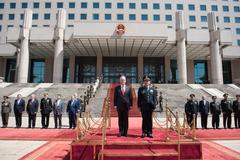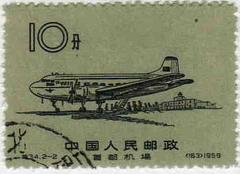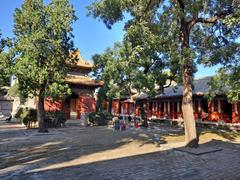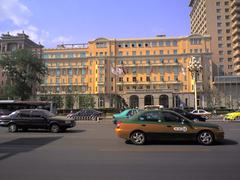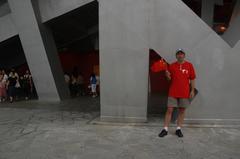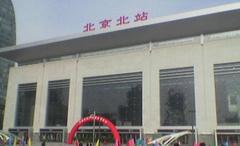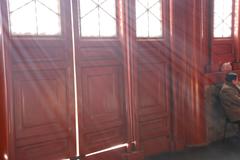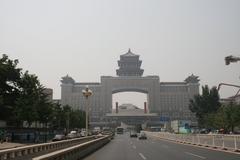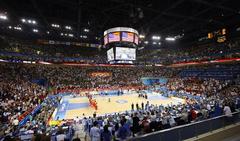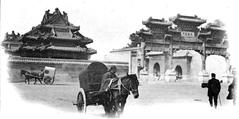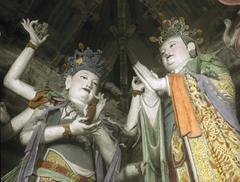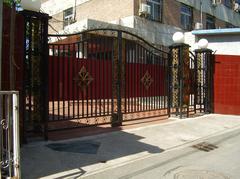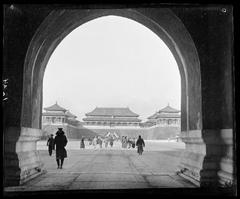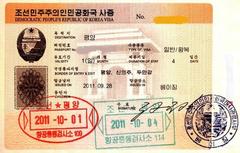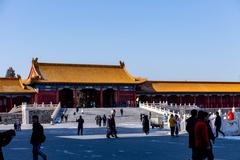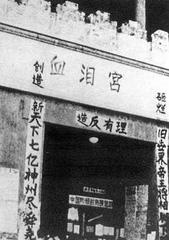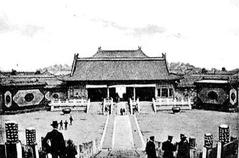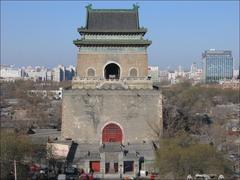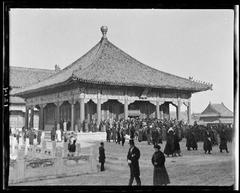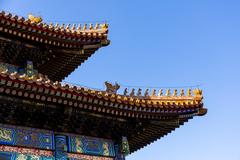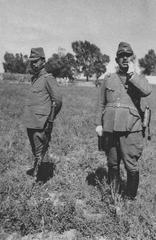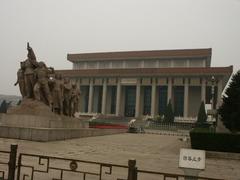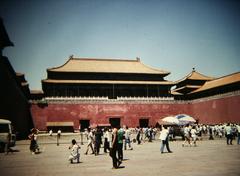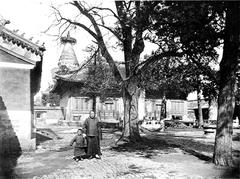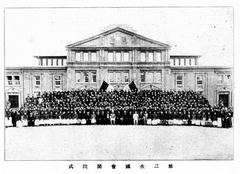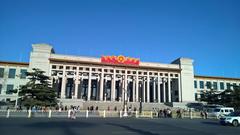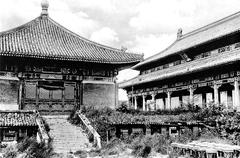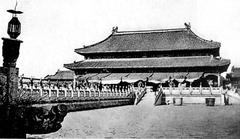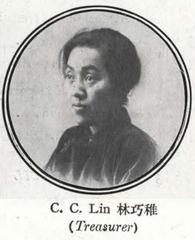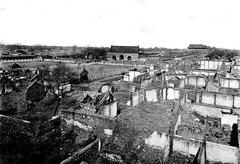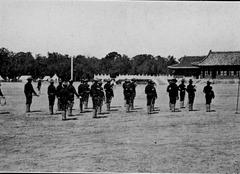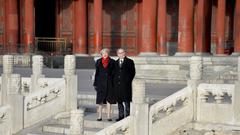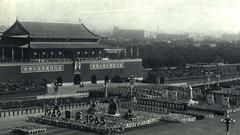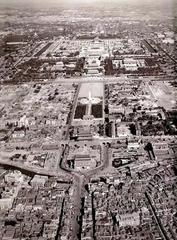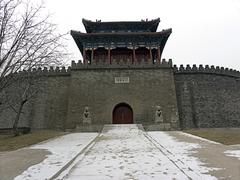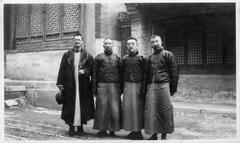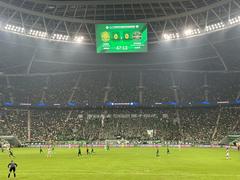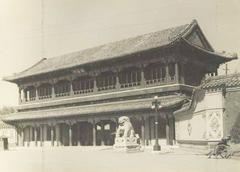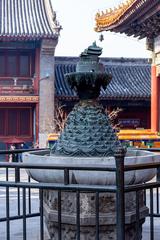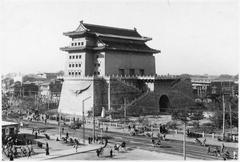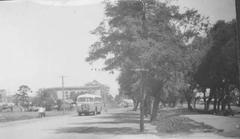Guide to Visiting Old Summer Palace Ruins Park Beijing
Publication Date: 23/07/2024
Introduction to Old Summer Palace Ruins Park
The Yuanmingyuan Ruins Park, commonly known as the Old Summer Palace Ruins Park, is one of Beijing’s most notable historical and cultural landmarks. Situated in the Haidian District, northwest of Beijing’s city center, the Old Summer Palace was once a vast complex of gardens, pavilions, lakes, and temples, epitomizing Qing Dynasty art and architecture. Built in the early 18th century during the reign of the Kangxi Emperor and later expanded by successive rulers, especially the Qianlong Emperor, the palace complex covered approximately 350 hectares, showcasing a unique blend of Chinese and Western architectural styles (Exploring the Yuanmingyuan Ruins Park).
The Old Summer Palace holds significant historical importance due to its destruction during the Second Opium War in 1860. British and French forces looted and burned the palace, resulting in the loss of countless priceless artifacts and leaving the site in ruins. This event is often viewed as a symbol of national humiliation and a catalyst for China’s modernization efforts in the late 19th and early 20th centuries (Discover the Old Summer Palace Ruins Park).
Today, the Yuanmingyuan Ruins Park serves as a poignant reminder of China’s rich cultural heritage and its turbulent history with foreign powers. Visitors to the park can explore the remnants of the once-magnificent palace, including the ruins of Western-style structures designed by Jesuit missionaries and the surviving gardens and lakes. The park also offers various amenities such as guided tours, special events, and photographic opportunities, making it a must-visit destination for history enthusiasts and casual travelers alike (Ultimate Guide to Visiting the Old Summer Palace Ruins Park).
Contents Overview
- Introduction
- Historical Background of 圆明园遗址公园 (Old Summer Palace Ruins Park)
- Origins and Construction
- Architectural Marvels
- The Opium Wars and Destruction
- Post-Destruction and Preservation Efforts
- Cultural Significance
- Visiting Hours and Tickets
- Travel Tips and Accessibility
- Nearby Attractions
- Special Events and Guided Tours
- Photographic Spots
- FAQ
- Conclusion
Historical Background of 圆明园遗址公园 (Old Summer Palace Ruins Park)
Origins and Construction
The Old Summer Palace, also known as 圆明园 (Yuanmingyuan), was an imperial garden in Beijing, China. Its construction began in 1707 during the reign of the Kangxi Emperor of the Qing Dynasty. Expanded and enhanced by subsequent emperors, particularly the Qianlong Emperor, the palace was transformed into an elaborate complex of gardens, pavilions, lakes, and temples, covering about 350 hectares. The architectural style was a mix of traditional Chinese and Western influences, reflecting the emperor’s cosmopolitan tastes.
Architectural Marvels
The Old Summer Palace was renowned for its exquisite architecture and landscaping. It consisted of three main gardens - the Garden of Perfect Brightness (圆明园), the Garden of Eternal Spring (长春园), and the Elegant Spring Garden (绮春园). Each garden featured intricate pavilions, bridges, and water features. The palace also housed a vast collection of art, including paintings, calligraphy, and rare books. Notable structures included the Western-style palaces designed by Jesuit missionaries, featuring European architectural elements like fountains and marble statues.
The Opium Wars and Destruction
The Old Summer Palace met its tragic fate during the Second Opium War (1856-1860). In 1860, British and French forces invaded Beijing and looted the palace. On October 18, 1860, under orders from Lord Elgin, the British High Commissioner to China, the palace was set on fire. The fire raged for three days, reducing the magnificent complex to ruins. The destruction was a punitive measure against the Qing Dynasty for the mistreatment of British and French prisoners and resulted in the loss of countless priceless artifacts.
Post-Destruction and Preservation Efforts
Following its destruction, the site of the Old Summer Palace remained largely abandoned and neglected. In the early 20th century, efforts were made to preserve and protect the ruins. In 1925, the Chinese government designated the site as a protected cultural heritage site. Significant restoration and preservation efforts began in the late 20th century. In 1988, the Chinese government established the Yuanmingyuan Ruins Park to preserve the remaining structures and educate the public about the site’s historical significance.
Cultural Significance
The Old Summer Palace symbolizes the height of Qing Dynasty architectural and artistic achievements and serves as a reminder of China’s colonial past and the impact of foreign invasions. The palace’s destruction is often cited as a symbol of national humiliation and a catalyst for China’s modernization efforts in the late 19th and early 20th centuries. Today, the ruins are a popular tourist destination and a site of national remembrance.
Visiting Hours and Tickets
The Yuanmingyuan Ruins Park is open year-round, but visiting hours vary depending on the season. During the peak season (April to October), the park is open from 7:00 AM to 7:00 PM. In the off-season (November to March), it operates from 7:00 AM to 5:30 PM. Tickets can be purchased at the entrance or online through the park’s official website. General admission is ¥10, with additional charges for specific attractions within the park.
Travel Tips and Accessibility
The park is located in the Haidian District, northwest of Beijing’s city center. It is easily accessible by public transportation, including buses and the subway (Line 4, Yuanmingyuan Park Station). Comfortable walking shoes are recommended due to the park’s extensive grounds. The park is wheelchair accessible, with ramps and designated pathways to accommodate visitors with mobility issues.
Nearby Attractions
While visiting the Yuanmingyuan Ruins Park, consider exploring nearby attractions such as the Summer Palace (颐和园), Tsinghua University, and Peking University. These sites offer additional historical and cultural insights into Beijing’s rich heritage.
Special Events and Guided Tours
The park hosts various cultural events and exhibitions throughout the year. Guided tours are available, providing in-depth information about the history and significance of the Old Summer Palace. These tours can be booked in advance through the park’s official website.
Photographic Spots
The Yuanmingyuan Ruins Park offers numerous picturesque spots for photography. Key locations include the ruins of the Western-style palaces, the surviving gardens, and the lakes. Early mornings and late afternoons provide the best lighting for capturing the park’s beauty.
FAQ
What are the visiting hours for the Yuanmingyuan Ruins Park?
- The park is open from 7:00 AM to 7:00 PM during the peak season (April to October) and from 7:00 AM to 5:30 PM during the off-season (November to March).
How much is the entrance fee?
- General admission is ¥10, with additional charges for specific attractions within the park.
How can I get to the park?
- The park is accessible by public transportation, including buses and the subway (Line 4, Yuanmingyuan Park Station).
Are there guided tours available?
- Yes, guided tours are available and can be booked in advance through the park’s official website.
Conclusion
The Old Summer Palace, or Yuanmingyuan, is a site of profound historical and cultural importance. Its ruins serve as a powerful reminder of China’s rich heritage and the impact of foreign invasions. The Yuanmingyuan Ruins Park offers visitors an opportunity to connect with this history and appreciate the beauty and significance of the Old Summer Palace. Through ongoing preservation efforts, the legacy of the Old Summer Palace continues to be honored and remembered.
For the latest updates and to plan your visit, check out our mobile app or follow our social media channels (Exploring the Yuanmingyuan Ruins Park, Discover the Old Summer Palace Ruins Park, Ultimate Guide to Visiting the Old Summer Palace Ruins Park).

